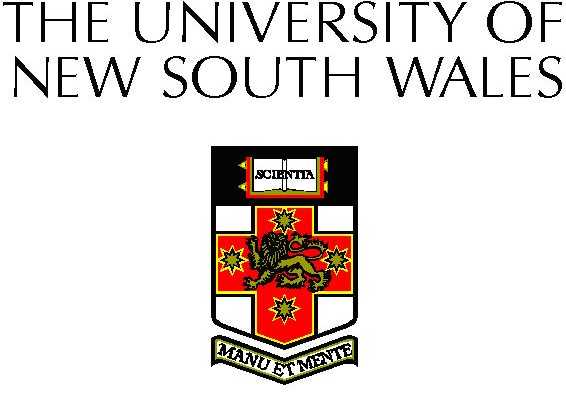 The University of New South Wales (UNSW; marked as UNSW Australia) is an Australian open examination college situated in the suburb of Kensington in Sydney, built up in 1949.
The University of New South Wales (UNSW; marked as UNSW Australia) is an Australian open examination college situated in the suburb of Kensington in Sydney, built up in 1949.
UNSW draws in the most noteworthy middle Australian Tertiary Admissions Rank in Australia, and sets the most astounding joined ATAR shorts out of any Australian college. It was positioned among the main 50 colleges on the planet in the 2015-16 QS World University Rankings. The college is especially solid in designing and innovation, business and financial matters, and law; the 2015 QS World University Rankings by Subject positioned UNSW to be twelfth on the planet for bookkeeping and back, fifteenth for law, and 21st in building and innovation. UNSW has created more tycoons, and its graduates hold more CEO positions of ASX 200 recorded organizations, than whatever other college in Australia.
The college contains eight resources, through which it offers lone wolf, expert and doctoral degrees. The fundamental grounds is situated on a 38-hectare site in the Sydney suburb of Kensington, seven kilometers from the focal point of Sydney. The innovative expressions workforce, UNSW Art and Design, is situated in Paddington, UNSW Canberra is situated at the Australian Defense Force Academy in Canberra and sub-grounds are situated in the Sydney CBD, suburbia of Randwick and Coogee. Research stations are situated all through the condition of New South Wales.
History
UNSW is an establishing individual from the Group of Eight, a coalition of Australian examination escalated colleges, and of Universitas 21, a main worldwide system of exploration colleges. It has worldwide trade and research organizations with more than 200 colleges around the globe.
Possibly establishing the college began from the emergency requests of World War II, amid which the country's consideration was attracted to the basic part that science and innovation played in changing a horticultural society into a current and modern one. The post-war Labor legislature of New South Wales perceived the expanding need a college spent significant time in preparing excellent specialists and innovation related experts in numbers past that of the limit and qualities of the current University of Sydney. This prompted the proposition to set up the Institute of Technology, put together by the then New South Wales Minister for Education Bob Heffron, acknowledged on 9 July 1946.
The college, initially named the "New South Wales University of Technology", picked up its statutory status through the sanctioning of the New South Wales University of Technology Act 1949 (NSW) by the Parliament of New South Wales in Sydney in 1949. In March 1948, classes started with a first admission of 46 understudies seeking after projects including structural designing, mechanical building, mining designing and electrical building. Around then the proposal projects were creative. Every course encapsulated a predetermined and significant time of commonsense preparing in the pertinent business. It was additionally remarkable for tertiary establishments around then to incorporate necessary direction in humanities.
At first, the college worked from the inward Sydney Technical College city grounds in Ultimo. Nonetheless, in 1951, the Parliament of New South Wales passed the New South Wales University of Technology (Construction) Act 1951 (NSW) to give subsidizing and permit structures to be raised at the Kensington site where the college is presently found.
In 1958, the college's name was changed to the "College of New South Wales" to mirror its change from an innovation based establishment to a generalist college. In 1960, it set up resources of expressions and drug and soon after chose to include the Faculty of Law, which appeared in 1971.
The college's first executive was Arthur Denning (1949–1952), who made vital commitments to establishing the college. In 1953, he was supplanted by Philip Baxter, who proceeded as bad habit chancellor when this present position's title was changed in 1955. Baxter's dynamic, if dictator, administration was integral to the college's initial 20 years. His visionary, yet now and again dubious, energies saw the college develop from a modest bunch to 15,000 understudies by 1968. He likewise spearheaded new investigative and innovative controls regardless of the feedback of traditionalists. Staff enlisted both locally and abroad, soon settled a wide universal notoriety. The new bad habit chancellor, Rupert Myers (1969–1981), brought solidification and a urbane administration style to a time of extending understudy numbers, interest for change in college style and difficulties of understudy distress.
The balancing out procedures of the 1980s oversaw by the bad habit chancellor, Michael Birt (1981–1992), gave a firm base to the vivacious corporatism and grounds improvements sought after by the consequent bad habit chancellor, John Niland (1992–2002). The 1990s saw the expansion of expressive arts to the college. The college set up schools in Newcastle (1951) and Wollongong (1961), which in the long run turned into the University of Newcastle and the University of Wollongong in 1965 and 1975 separately.
At present, private sources contribute 45% of its yearly financing.
The college is home to the Lowy Cancer Research Center, one of Australia's biggest growth research offices. The middle, costing $127 million, is Australia's first office to unite scientists in youth and grown-up disease.
In 2003, the college was welcomed by Singapore's Economic Development Board to think about opening as a grounds there. Taking after a 2004 choice to continue, the main period of an arranged $200 m grounds opened in 2007. Understudies and staff were sent home and the grounds shut after one semester taking after generous monetary misfortunes.

0 comments:
Post a Comment